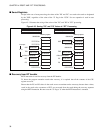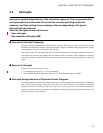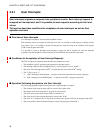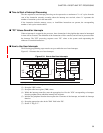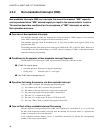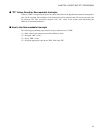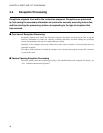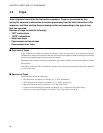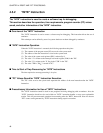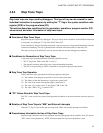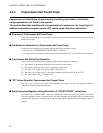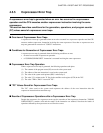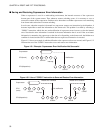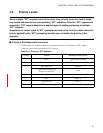
44
CHAPTER 4 RESET AND "EIT" PROCESSING
4.5 Traps
Traps originate from within the instruction sequence. Traps are processed by first
saving the necessary information to resume processing from the next instruction in the
sequence, and then starting the processing routine corresponding to the type of trap
that has occurred.
Sources of traps include the following:
• "INT" instructions
• "INTE" instructions
• Step trace traps
• Coprocessor not found traps
• Coprocessor error traps
■ Overview of Traps
Traps originate from within the instruction sequence. Traps are processed by first saving the necessary
information to resume processing from the next instruction in the sequence, and then starting the processing
routine corresponding to the type of trap that has occurred.
Branching to the exception processing routine takes place after execution of the instruction that has caused
the exception.
The address of the instruction in which the exception occurs becomes the program counter (PC) value that
is saved to the stack.
■ Sources of Traps
Sources of traps include the following:
• INT instructions (For details, see Section "4.5.1 "INT" Instructions")
• INTE instructions (For details, see Section "4.5.2 "INTE" Instruction")
• Step trace traps (For details, see Section "4.5.3 Step Trace Traps")
• Coprocessor not found traps (For details, see Section "4.5.4 Coprocessor Not Found Traps")
• Coprocessor error traps (For details, see Section "4.5.5 Coprocessor Error Trap")



